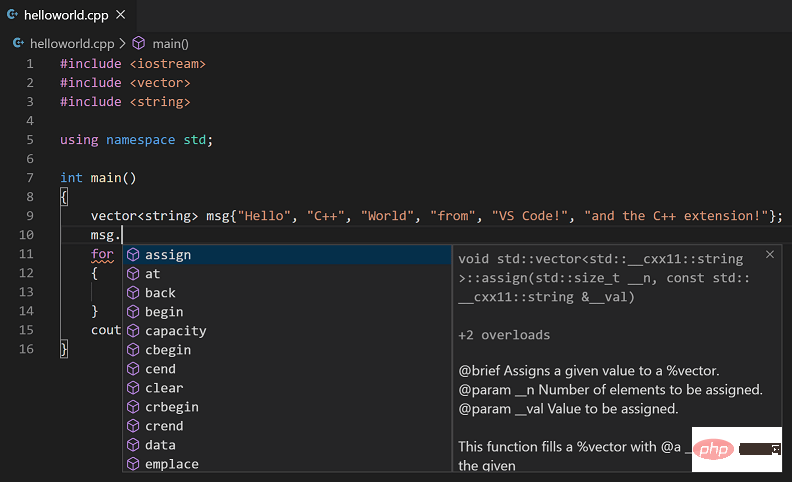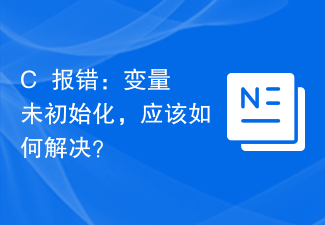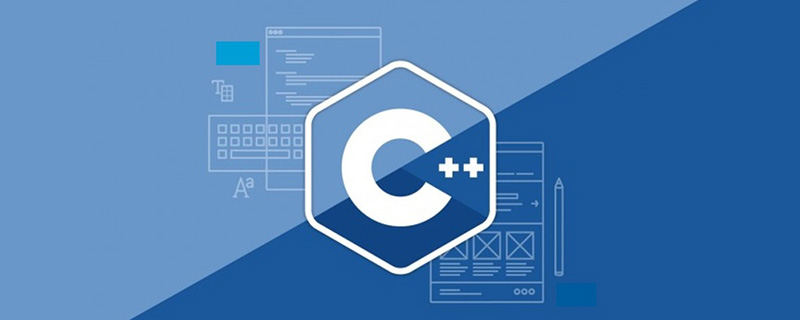Understanding of polymorphism:
is a new object-oriented requirement:
Judge the call of the rewritten function based on the actual object type
If the parent class pointer points to If it is a parent class object, call the function defined in the parent class
If the parent class pointer points to a subclass object, call the overridden function defined in the subclass

Solution:
Ø C++ supports polymorphism through the virtual keyword
Ø Functions declared using virtual can be rewritten to exhibit polymorphic features
//Three major concepts of object-oriented
Encapsulation
breaks through the concept of C language functions. .
Inheritance
Code reuse. . . . I reuse the code I originally wrote. . .
Polymorphism
Polymorphism can use the future. . . . . A framework was written in the 1980s. . . . . . Code written by people in the 1990s
Polymorphism is a goal pursued by our software industry. . .
//Written a framework that can call on the ability of code written by later generations
Further understanding
//Three conditions for indirect assignment to be established:
//1 Define two variables. . .
//2 Establish association. . . .
//3 *p
//Three conditions for polymorphism to be established:
//1 There must be inheritance
//2 There must be Function rewriting. . . C virtual function
//3 There must be a parent class pointer (parent class reference) pointing to the subclass object
//Polymorphism is the basis of the design pattern, and polymorphism is the basis of the framework
Knowledge point 1 Virtual destructor
The destructor is to release resources.
When there is a need to release resources and the object cannot be released directly, such as:
C *myC = new C; //C inherits B, and B inherits class A
delete myC; //Release resources directly through subclass objects. In this case, there is no need to write the virtual keyword
Need to execute the destructors of all subclasses and objects through the parent class pointer
If you want to release all subclass resources through the parent class pointer (you need to add it in the final parent class destructor virtual keyword)
void howtodelete(A *base)
{
delete base; //这句话不会表现成多态 这种属性
}Knowledge point 2: The difference between overloading and rewriting
Function overloading
Must be done in the same class
Subclasses cannot overload functions of the parent class. Functions of the same name in the parent class will be overwritten by name (for example: there is function a() in the parent class, and there is also function a() in the subclass, but there is also function a(). int b) This function generates an error by overloading the parent class function! )
Overloading determines the function call based on the parameter type and number during compilation
Function rewriting
Must occur between the parent class and the subclass
And the functions in the parent class and the subclass must have exactly the same prototype
Using virtual declaration can produce polymorphism ( If virtual is not used, it is called redefinition)
Polymorphism determines function calls based on the type of specific objects during runtime
Example analysis:
//1 C++编译器 看到func名字 ,因子类中func名字已经存在了(名称覆盖).所以c++编译器不会去找父类的4个参数的func函数 //2 c++编译器只会在子类中,查找func函数,找到了两个func,一个是2个参数的,一个是3个参数的. //3 C++编译器开始报错..... error C2661: “Child::func”: 没有重载函数接受 4 个参数 //4 若想调用父类的func,只能加上父类的域名..这样去调用.. c1.func(1, 3, 4, 5); //c1.func(); //func函数的名字,在子类中发生了名称覆盖;子类的函数的名字,占用了父类的函数的名字的位置 //因为子类中已经有了func名字的重载形式。。。。 //编译器开始在子类中找func函数。。。。但是没有0个参数的func函数
3 Key points:
The implementation principle of polymorphism in C++
When a virtual function is declared in a class, the compiler will generate a virtual function table in the class
The virtual function table is A data structure that stores class member function pointers
The virtual function table is automatically generated and maintained by the compiler
Virtual member functions will be placed in the virtual function table by the compiler
When there is a virtual function, each object has a pointer to the virtual function table (vptr pointer)



Note 1:
Calling the rewritten function through the virtual function table pointer VPTR is performed when the program is running, so addressing operation is required to determine the function that should actually be called. . For ordinary member functions, the function to be called is determined at compile time. In terms of efficiency, virtual functions are much less efficient.
Note 2:
For efficiency reasons, it is not necessary to declare all member functions as virtual functions
Note 3: The C++ compiler executes the HowToPrint function, which is not required Distinguish whether it is a subclass object or a parent class object

The above is the ten summary of C++ review points - polymorphism (1). For more related content, please pay attention to PHP Chinese Net (www.php.cn)!
 Windows 11 系统下的五款最佳免费 C++ 编译器推荐Apr 23, 2023 am 08:52 AM
Windows 11 系统下的五款最佳免费 C++ 编译器推荐Apr 23, 2023 am 08:52 AMC++是一种广泛使用的面向对象的计算机编程语言,它支持您与之交互的大多数应用程序和网站。你需要编译器和集成开发环境来开发C++应用程序,既然你在这里,我猜你正在寻找一个。我们将在本文中介绍一些适用于Windows11的C++编译器的主要推荐。许多审查的编译器将主要用于C++,但也有许多通用编译器您可能想尝试。MinGW可以在Windows11上运行吗?在本文中,我们没有将MinGW作为独立编译器进行讨论,但如果讨论了某些IDE中的功能,并且是DevC++编译器的首选
 C++报错:变量未初始化,应该如何解决?Aug 21, 2023 pm 10:01 PM
C++报错:变量未初始化,应该如何解决?Aug 21, 2023 pm 10:01 PM在C++程序开发中,当我们声明了一个变量但是没有对其进行初始化,就会出现“变量未初始化”的报错。这种报错经常会让人感到很困惑和无从下手,因为这种错误并不像其他常见的语法错误那样具体,也不会给出特定的代码行数或者错误类型。因此,下面我们将详细介绍变量未初始化的问题,以及如何解决这个报错。一、什么是变量未初始化错误?变量未初始化是指在程序中声明了一个变量但是没有
 C++编译错误:未定义的引用,该怎么解决?Aug 21, 2023 pm 08:52 PM
C++编译错误:未定义的引用,该怎么解决?Aug 21, 2023 pm 08:52 PMC++是一门广受欢迎的编程语言,但是在使用过程中,经常会出现“未定义的引用”这个编译错误,给程序的开发带来了诸多麻烦。本篇文章将从出错原因和解决方法两个方面,探讨“未定义的引用”错误的解决方法。一、出错原因C++编译器在编译一个源文件时,会将它分为两个阶段:编译阶段和链接阶段。编译阶段将源文件中的源码转换为汇编代码,而链接阶段将不同的源文件合并为一个可执行文
 如何优化C++开发中的文件读写性能Aug 21, 2023 pm 10:13 PM
如何优化C++开发中的文件读写性能Aug 21, 2023 pm 10:13 PM如何优化C++开发中的文件读写性能在C++开发过程中,文件的读写操作是常见的任务之一。然而,由于文件读写是磁盘IO操作,相对于内存IO操作来说会更为耗时。为了提高程序的性能,我们需要优化文件读写操作。本文将介绍一些常见的优化技巧和建议,帮助开发者在C++文件读写过程中提高性能。使用合适的文件读写方式在C++中,文件读写可以通过多种方式实现,如C风格的文件IO
 C++编译错误:无法为类模板找到实例化,应该怎么解决?Aug 21, 2023 pm 08:33 PM
C++编译错误:无法为类模板找到实例化,应该怎么解决?Aug 21, 2023 pm 08:33 PMC++是一门强大的编程语言,它支持使用类模板来实现代码的复用,提高开发效率。但是在使用类模板时,可能会遭遇编译错误,其中一个比较常见的错误是“无法为类模板找到实例化”(error:cannotfindinstantiationofclasstemplate)。本文将介绍这个问题的原因以及如何解决。问题描述在使用类模板时,有时会遇到以下错误信息:e
 iostream头文件的作用是什么Mar 25, 2021 pm 03:45 PM
iostream头文件的作用是什么Mar 25, 2021 pm 03:45 PMiostream头文件包含了操作输入输出流的方法,比如读取一个文件,以流的方式读取;其作用是:让初学者有一个方便的命令行输入输出试验环境。iostream的设计初衷是提供一个可扩展的类型安全的IO机制。
 C++语法错误:使用了未定义的命名空间,怎么处理?Aug 21, 2023 pm 09:49 PM
C++语法错误:使用了未定义的命名空间,怎么处理?Aug 21, 2023 pm 09:49 PMC++是一种广泛使用的高级编程语言,它有很高的灵活性和可扩展性,但同时也需要开发者严格掌握其语法规则才能避免出现错误。其中,常见的错误之一就是“使用了未定义的命名空间”。本文将介绍该错误的含义、出现原因和解决方法。一、什么是使用了未定义的命名空间?在C++中,命名空间是一种组织可重用代码的方式,以便保持代码的模块性和可读性。使用命名空间的方式可以使同名的函数
 C++中的信号处理技巧Aug 21, 2023 pm 10:01 PM
C++中的信号处理技巧Aug 21, 2023 pm 10:01 PMC++是一种流行的编程语言,它强大而灵活,适用于各种应用程序开发。在使用C++开发应用程序时,经常需要处理各种信号。本文将介绍C++中的信号处理技巧,以帮助开发人员更好地掌握这一方面。一、信号处理的基本概念信号是一种软件中断,用于通知应用程序内部或外部事件。当特定事件发生时,操作系统会向应用程序发送信号,应用程序可以选择忽略或响应此信号。在C++中,信号可以


Hot AI Tools

Undresser.AI Undress
AI-powered app for creating realistic nude photos

AI Clothes Remover
Online AI tool for removing clothes from photos.

Undress AI Tool
Undress images for free

Clothoff.io
AI clothes remover

AI Hentai Generator
Generate AI Hentai for free.

Hot Article

Hot Tools

WebStorm Mac version
Useful JavaScript development tools

SAP NetWeaver Server Adapter for Eclipse
Integrate Eclipse with SAP NetWeaver application server.

MantisBT
Mantis is an easy-to-deploy web-based defect tracking tool designed to aid in product defect tracking. It requires PHP, MySQL and a web server. Check out our demo and hosting services.

SublimeText3 Chinese version
Chinese version, very easy to use

Dreamweaver Mac version
Visual web development tools





